P4 – Analysis of a Computer Game
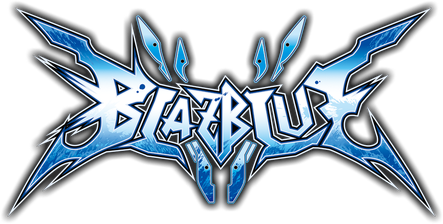
BlazBlue (Series)
Presentation
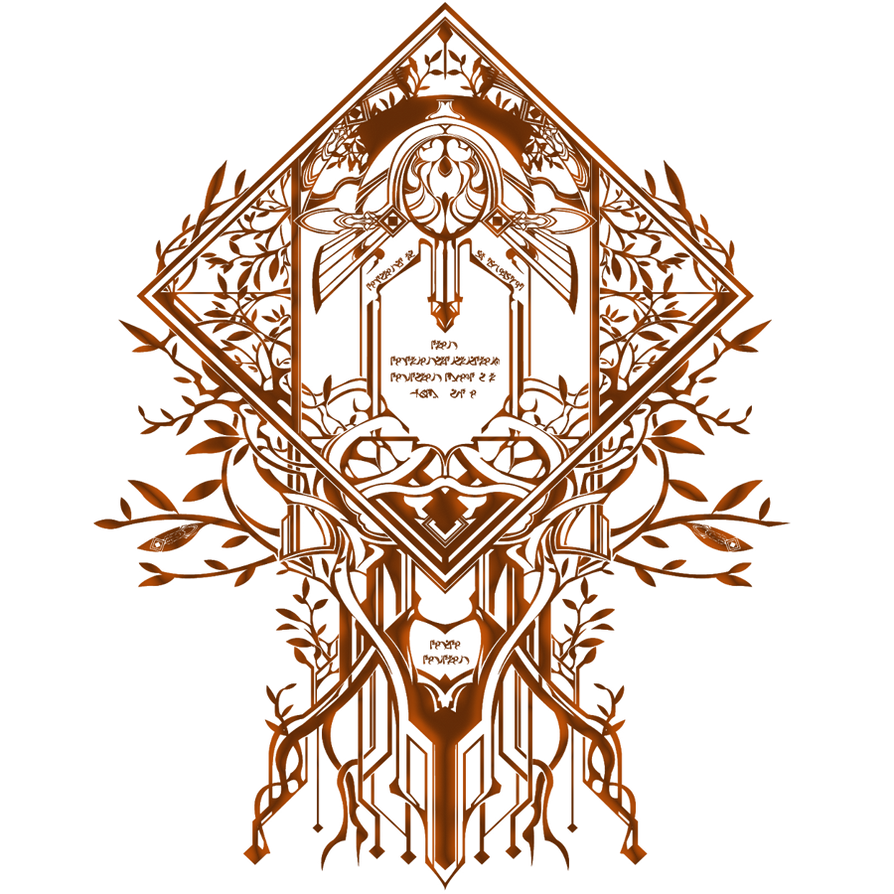 |
| Each character has their own unique Crest |
The game is a 2-Dimensional Fighting game, where you can play from 12-36 characters, all fully constructed uses an advanced method of mimicking Sprites, by first creating a 3-D polygon model, then overlaying it with texturing and shading. Then, they appear on a 2-D plain, which also maintains the consistency of the games look with the characters, being more of an Anime style. With this style, and the use of sprites (Effects and particles), it is able to show off a more exaggerated way to show of moves and character movement.
Narrative Structure (Introduction and Set up)
 |
| Story Select screen |
To call the story "complex" is probably being kind at best, as it tackles multiple time periods, and time travel. It honestly is very convoluted and at times frustrating to fully understand what is happening, but it's not hard to enjoy it from a basic level. The full grasp of the narrative is the difficult to comprehend, not the basics, and regardless, I find this leap in narrative for fighting games to be a great step for the genre, as again, so many games reply on uninteresting slideshows for their stories and character endings that seeing a fighting game actually trying to tell a compelling tale is more than admirable in my eyes. The story focuses in a stylised, futuristic city called Kagutsuchi, or as it's full name "13th Hierarchical City, Kagutsuchi".
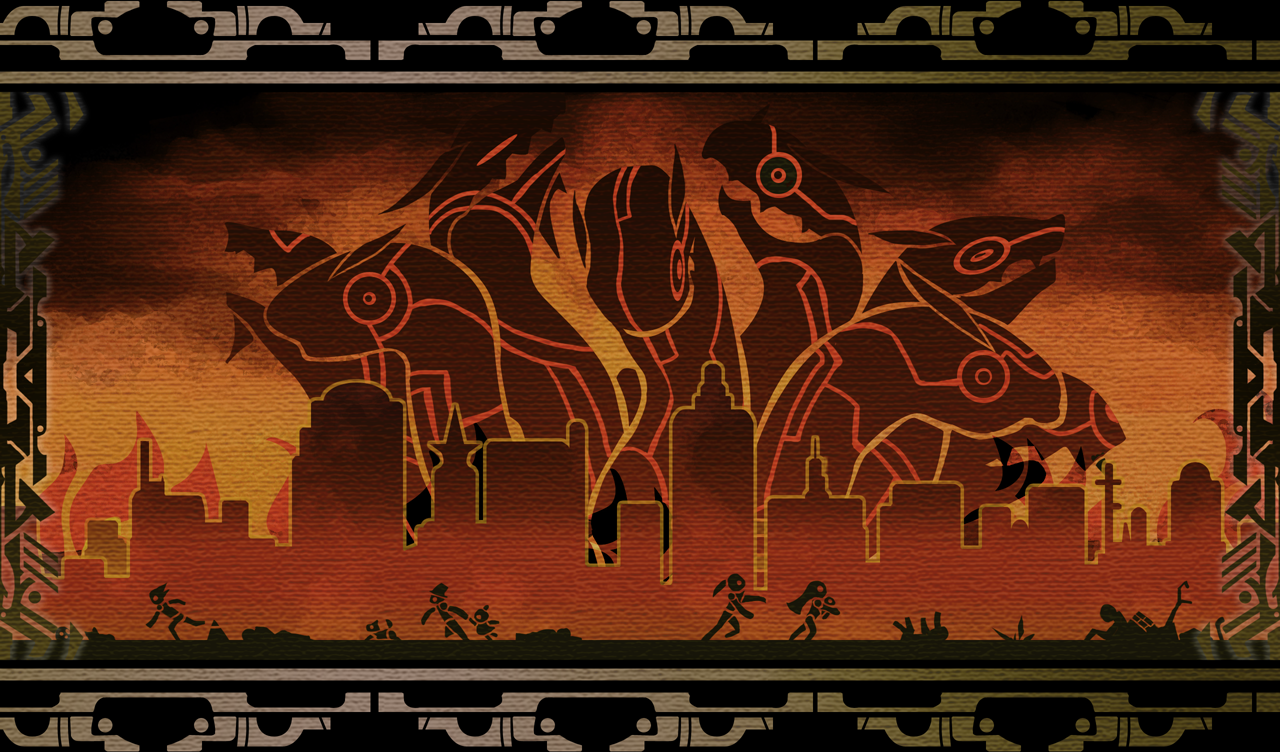 |
| Mural depicting The Black Beast's attack |
 |
| Mural depicting the Six Heroes |
The beginning history is the tale of an ancient monster called "The Black Beast", a colossal serpentine creature, capable of mass destruction, and with zero recognition of friend or foe, attacks Japan, January 1st, 2100. Causing death and terror wherever it went, until it is eventually stopped by a group of warriors known as the "Six Heroes", whose victory and triumph is later told in legend along with the Black Beast.
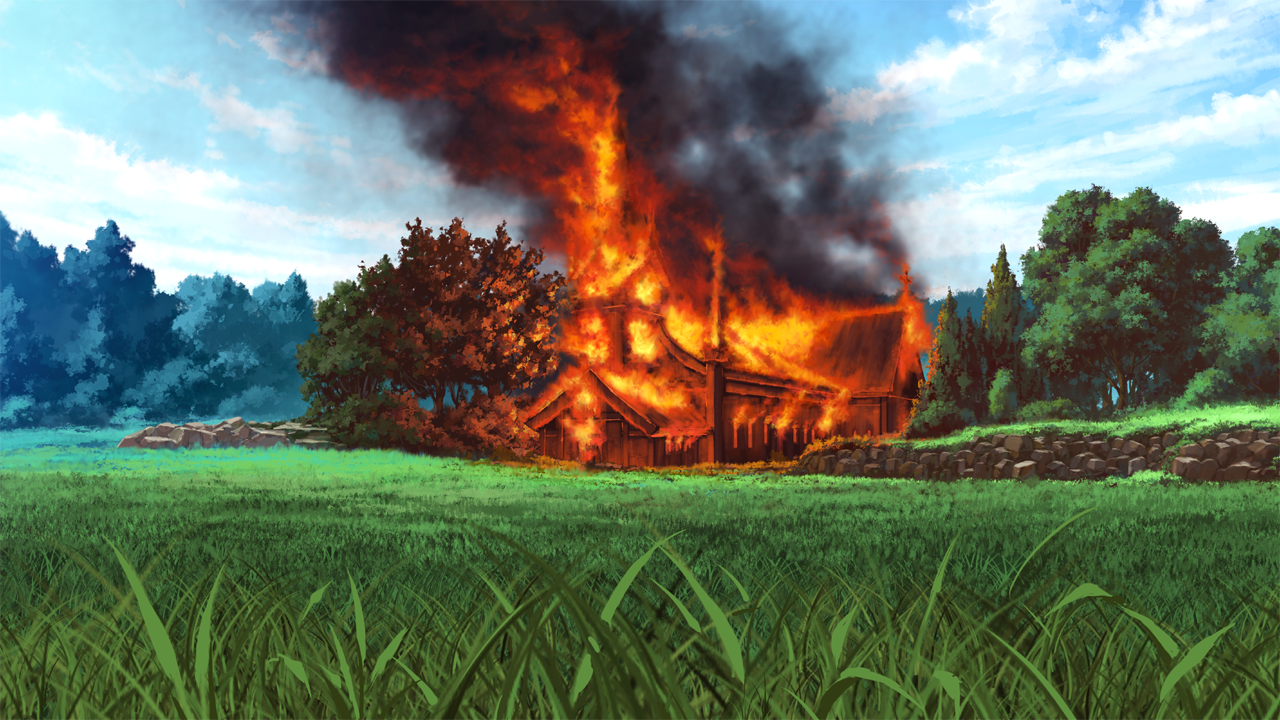
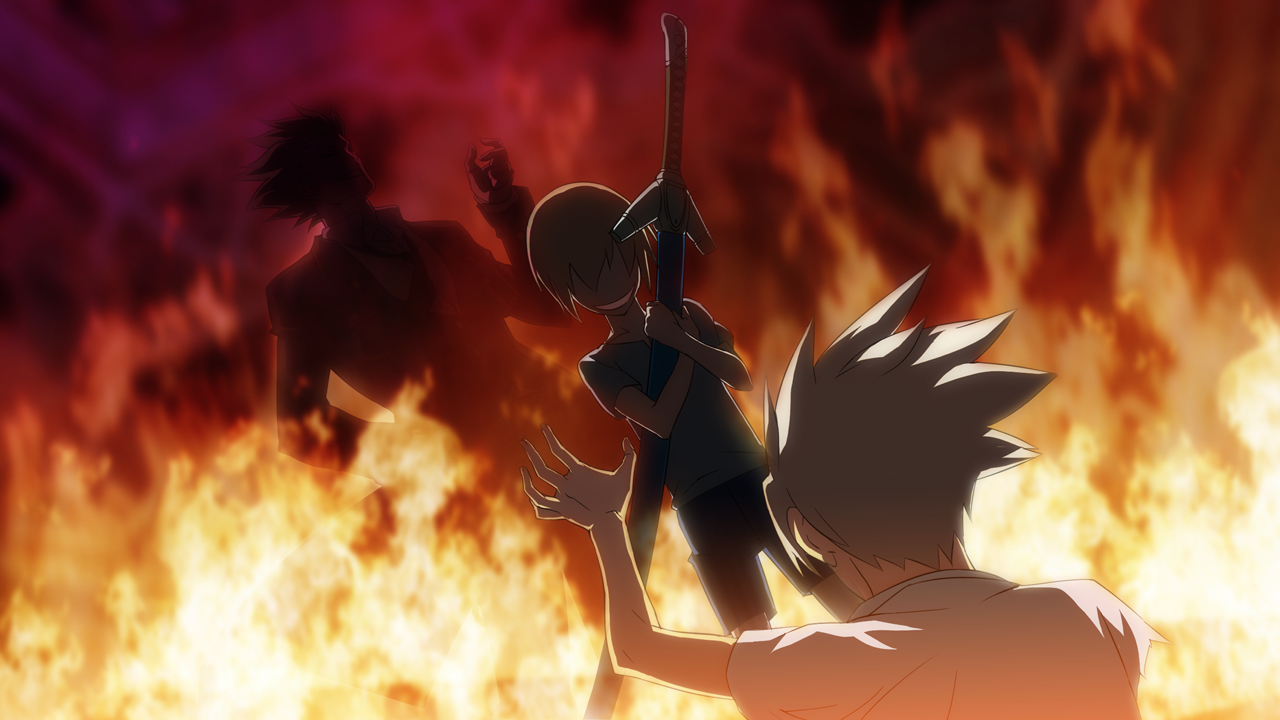 It begins with a brief flashback detailing our protagonist's childhood, and where they experienced a life changing moment. Like Ryu from Street Fighter, the "protagonist" of the series, Ragna the Bloodedge, is the faithful front-man for the game as like all fighting games, giving players a relatively easy character to try out to get used to the mechanics, but not too easy for masters to show off, and to compliment this, their personality is likable due to his confidence, but also has moments of showing a sympathetic side with care to others. I feel as this is a good way to make Ragna a more likable hero, as he gives off somewhat of an anti-hero vibe, but not in a way that comes off as cold or selfish, and lets players feel more connected to him and the story.
It begins with a brief flashback detailing our protagonist's childhood, and where they experienced a life changing moment. Like Ryu from Street Fighter, the "protagonist" of the series, Ragna the Bloodedge, is the faithful front-man for the game as like all fighting games, giving players a relatively easy character to try out to get used to the mechanics, but not too easy for masters to show off, and to compliment this, their personality is likable due to his confidence, but also has moments of showing a sympathetic side with care to others. I feel as this is a good way to make Ragna a more likable hero, as he gives off somewhat of an anti-hero vibe, but not in a way that comes off as cold or selfish, and lets players feel more connected to him and the story.As previously mentioned, the story begins with a flashback to Ragna's childhood, as a church where he, as well as his Brother and Sister attend, is burning down and as Ragna notices from a distance, proceeds to run towards it and try to stop it. Ragna, further showing a more caring and likeable side, tries his best to save not only his siblings, but the church itself, but ultimately failing as the fire has already consumed the Churches interior, leaving the trio trapped. Then, a mysterious and taunting voice appears, followed by the silhouette of series antagonist, Yuuki Terumi, who proceeds to taunt and torture Ragna, as his brother and sister look on. The reason they are not interfering, is due to Terumi revealing to Jin that Ragna has remnants of the Black Beast within him, and will bring back its murderous rampage through him. As they look on at Ragna struggling, Terumi proceeds to tear off his right arm, which plays into a gameplay mechanic later on for the character. The scene ends with Terumi leaving with both of Ragna's siblings, and with him still left in the burning church. He is later rescued by Jubei, one of the previously mentioned Six Heroes.
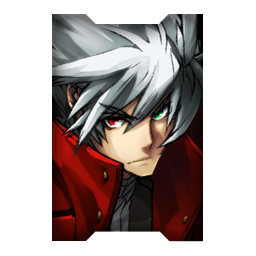 |
| Ragna the Bloodedge (Post incident) |
After being rescued, Ragna is nursed back to health and later trained by Jubei to grow into more of a warrior, and equips him with a new mechanical prosthetic arm, containing in it a Grimoire, allowing Ragna to use magical seals, which is a prominent power source within the BlazBlue universe. Before the experience at the church, Ragna's hair was of a light blonde shade, with green eyes, but after the incident and trauma from it, his hair turned to a frost white colour, as well as a side effect of gaining his Grimoire, turning one of his eyes red. After regaining the strength to prove himself to Jubei, he took him back to the Churches remains and gave him two items, a long Red Jacket and a Buster Sword that previously belonged to a hero, known as "Bloodedge". With his new name and weight of a man who wore the same gear as him, Ragna sets off on his own path.
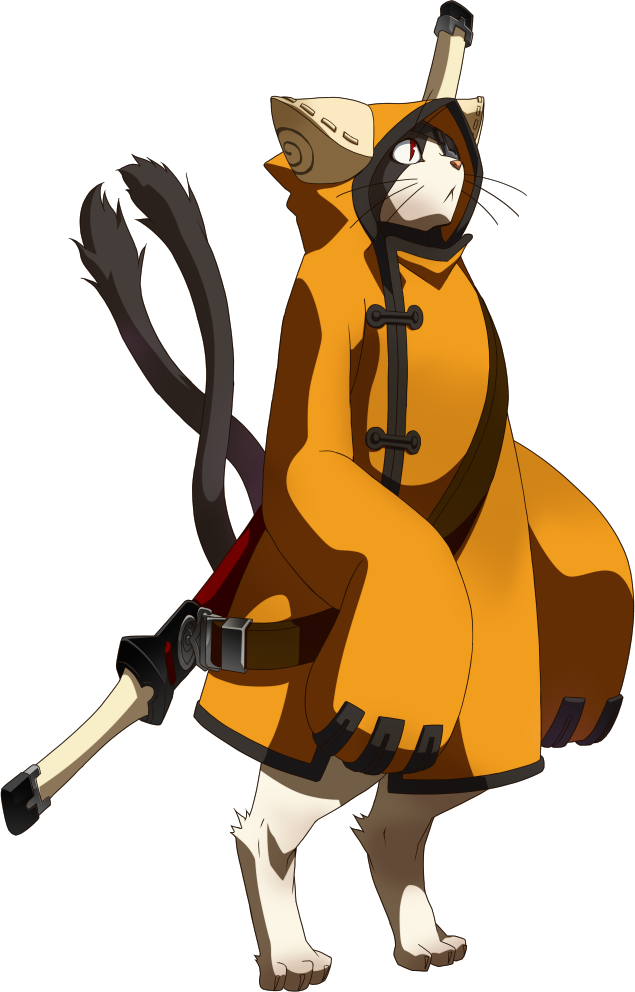 |
| Jubei |
That is the summary of the beginning act to BlazBlue, and I believe it works well with setting up the kind of world that is being shown. Such as the use of magic, and races, since Jubei is a bipedal Cat, as it is later displayed there are cross Human and Animal people known as Beastkin, however their appearance can vary. With this there is a vast amount of possibilities in this world, due to the fantastical nature given to the player, and it does pay off. Each character has there own story, but what makes them different than just the typical "Fight 8 characters, boss, then get the ending" formula, BlazBlue's character stories contain varying routes and endings, as it lets players make decisions that impact the next fight and ending they'll receive. Even how the player acts throughout their fight can change the ending, for example, using the ultimate finishing finishing move known as an "Astral Finish", which basically completely destroys your opponent in a flashy sequence upon hit, if the player uses this too many times during Ragna's story, he'll be consumed by the power of his Grimoire and the Black Beast, eventually leading to a bad ending. This gives so much depth and diversity, as well as replay value to a single characters story, let alone 12-36 characters throughout the series. I personally feel this is a great step for the genre of fighting games, as it puts to shame not only the half-assed stories found in the majority of fighters, but Role-Playing games too, as they sometimes struggle to tell a compelling story with consequences and replay value. I only really touched on the intro to the story, due to the fact that if I were to go through every character story, we'd be here for all day, and not to mention the varying canon endings.
Representation of Characters
There are a fruitful amount of characters throughout BlazBlue that bring there own personalities and conflicts to the front, and all can be experienced through the games great attention to narrative, and each are represented wonderfully with complex and conflicting arcs, often spanning multiple games. Since the first game, the main character has been the hot-headed, Ragna the Bloodedge. Ragna offers a good protagonist to latch onto, as I went over in the Story section, Ragna's backstory can lead players to feel sympathy due to the brutal nature of what took place and being left for dead without a right arm. His personality once he gets back to functioning again, can be rude and harsh, which can come off as unlikable, but in the way it's written it's more so him letting his past still haunt him, as he did suffer a traumatic event in his early childhood, which is why when he gets moments of happiness or care from friendly characters, it's all the more heartwarming. And again, he doesn't come off as a douche like in other media, but simply that he's focused too much on finding the man that ruined his life to really care for others, which is later developed and grows to show more care for others. He does display a great persistence in his character, since he does come back from a near death experience, and throughout the story he gets even more beatings from story related battles, yet he continues to get back up and fight back, showing dedication which is great for a protagonist. Something I find interesting with BlazBlue is that all the characters feel just as important to the story, they all are given enough influence to the world and character to feel necessary for their placement, which show off their strengths and weaknesses not only in their specific stories, but also transfers to other characters' too.
Target Demographic / How the Audience is addressed?
BlazBlue is a game that is set to appeal to those with a love of fast, intense and satisfying action, as well as strategists who enjoy thoroughly learning the ins and outs of the game, and getting a mastery level where they can effortlessly play all playstyles given to them. As well as this the game appeals to fans from the Anime crowd, as it's stylised with exaggerated features which is prominent within the Anime style. I feel as though it can draw attention form various genres as well, such as hack and slash games like Devil May Cry, as in both games you're rewarded and encouraged to use vast amounts of flashy combos to achieve your goals, as well as being accompanied by fitting soundtracks that heighten the thrill of the fights you play.
The game is able to address the fans of former Fighting games, such as the Guilty Gear, since the people behind BlazBlue, Arc System Works, are now bringing an entirely new series to the table, which can gain the previous fandom to try it out. Also the manga and anime communities are typically attracted to the style of BlazBlue which grants more possible fans to gain interest, and the community can later flourish.
Chosen Genre ( Fighting Games )
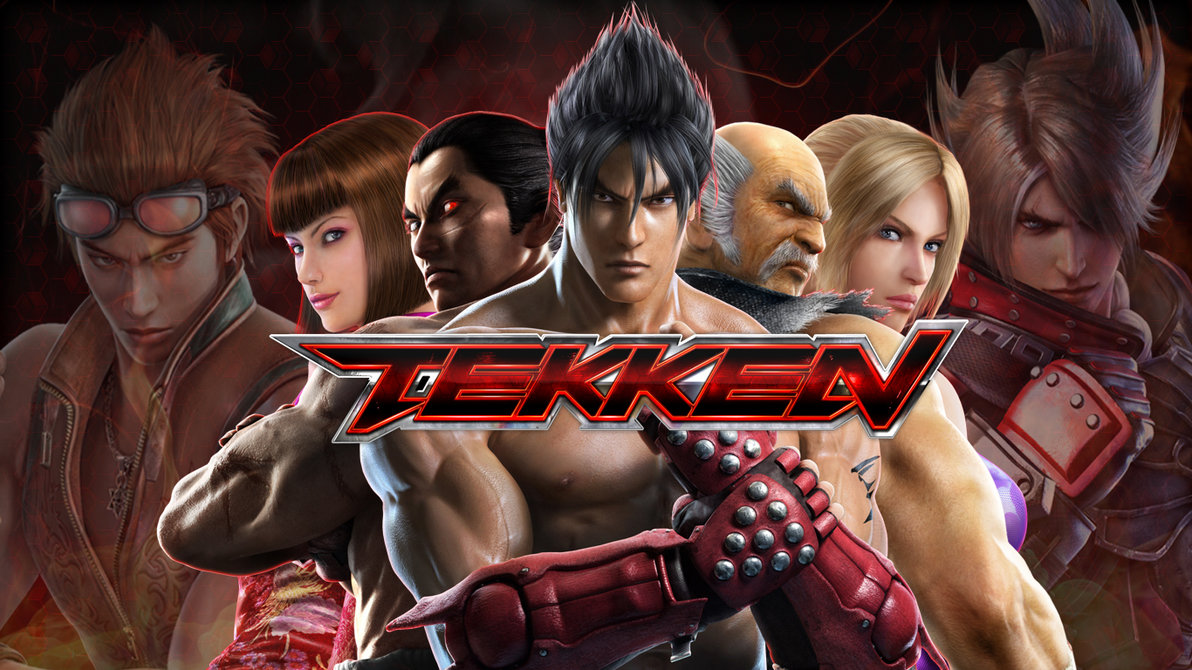

This game without a doubt falls under the fighting game Genre, and would be a staple in the Fighting Game Community (FGC), where tournaments are commonly held for each game to see who is the best at mastering the fundamentals of their chosen character. Games found within this genre are typically packed full of varied characters with a style of fighting to suit anyone, so someone can pick up and find someone of their fancy. Once you've found your character you can further your knowledge of their play-style by using the training/practice mod, a staple found in pretty much all fighting games. Usually each fighting game comes with its own unique flare and visual style, for example: Tekken for its more realistic character visuals, and real world fighting techniques, or Street Fighter with its exaggerated body proportions and cartoon cell shaded graphics. BlazBlue would fall under exaggerated and with more of an Anime style.
The genre was most popular back in the days of the arcades, with games such a Street Fighter, Tekken and Mortal Kombat dominating the scene, and allowing players to battle through a gauntlet of challengers to prove themselves as the best. Now though we have the power of online to fight anyone in the entire world, and the previously mentioned tournaments to go to if for those fancy themselves more for the competitive scene..
No comments:
Post a Comment